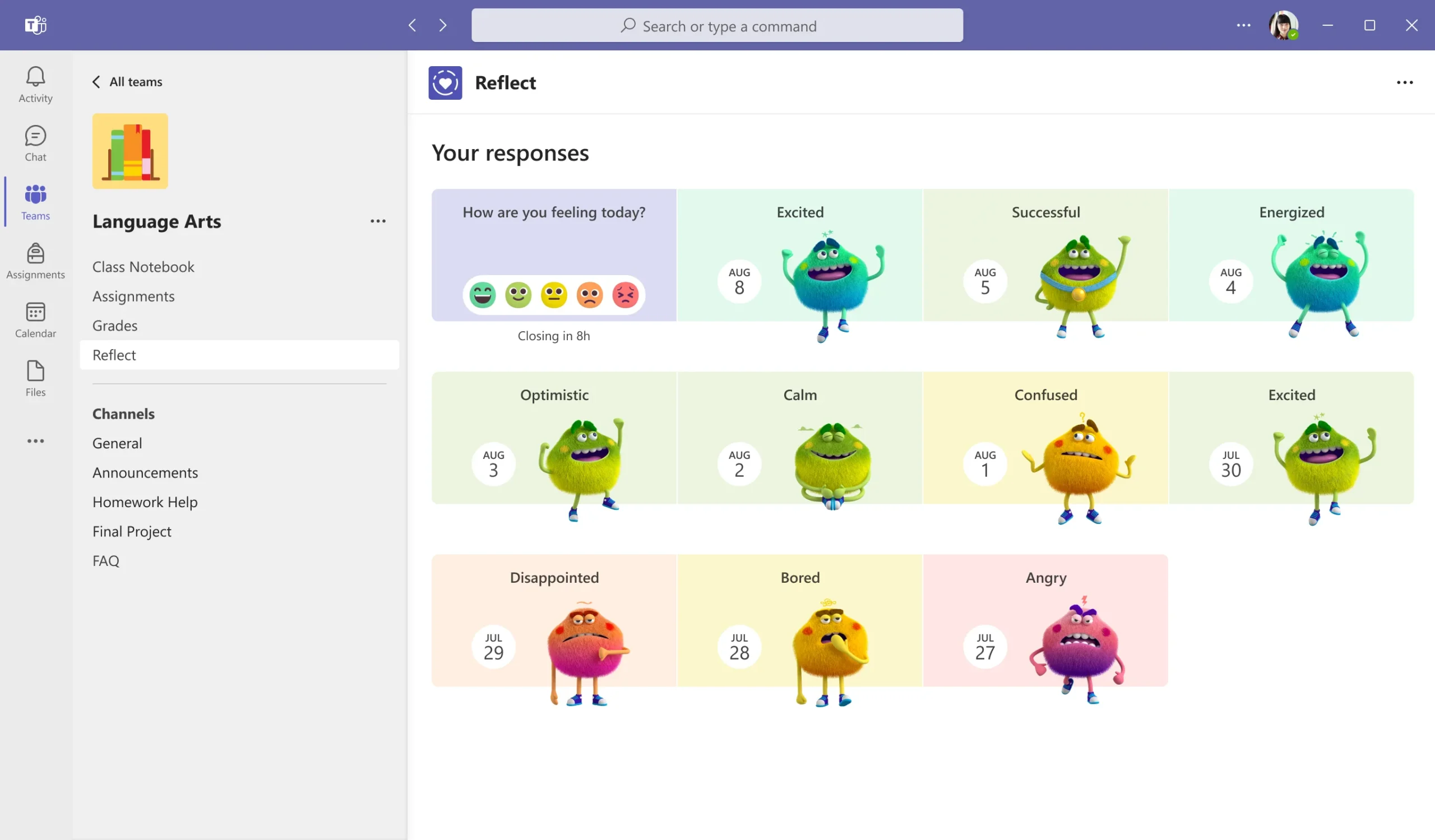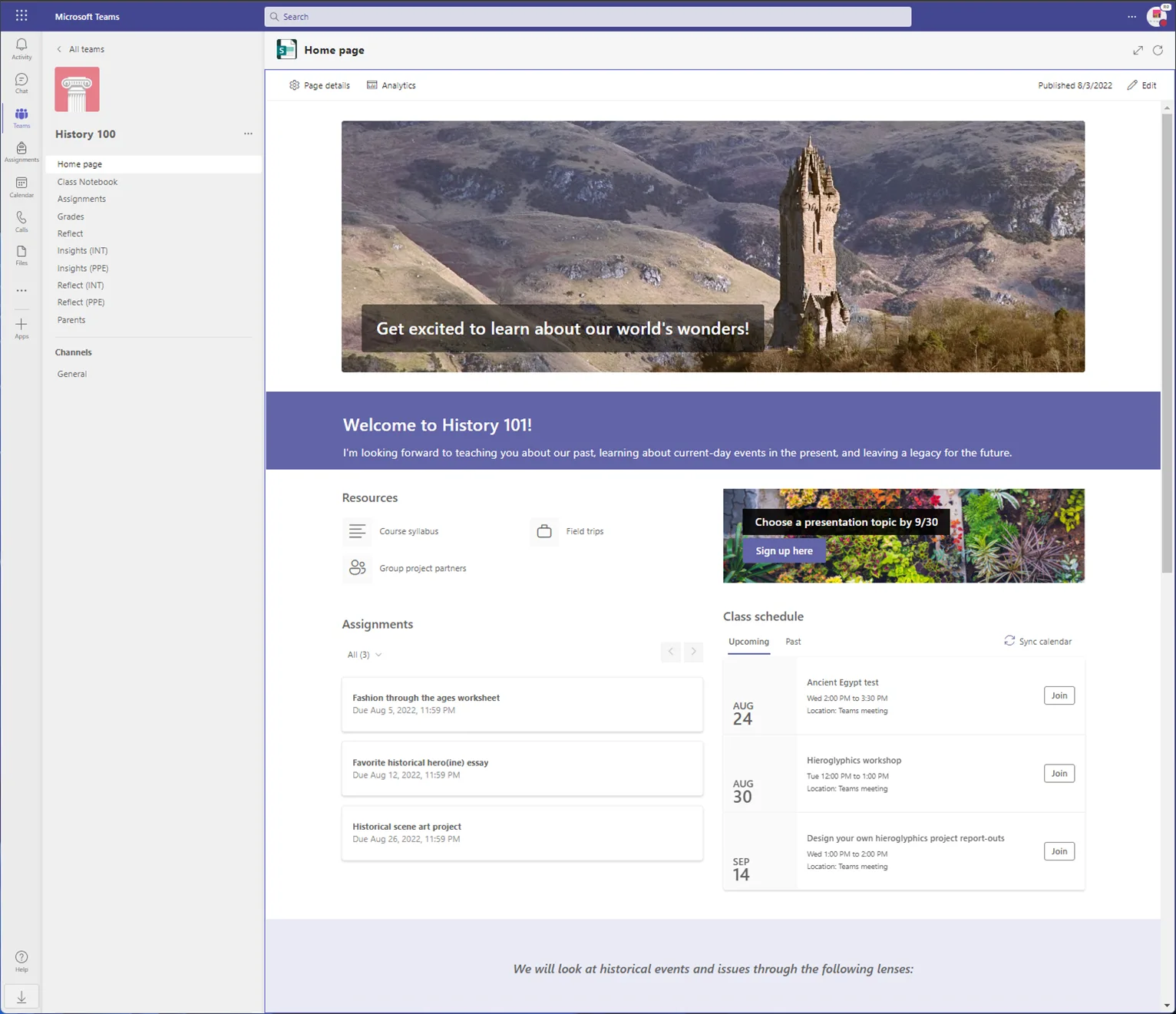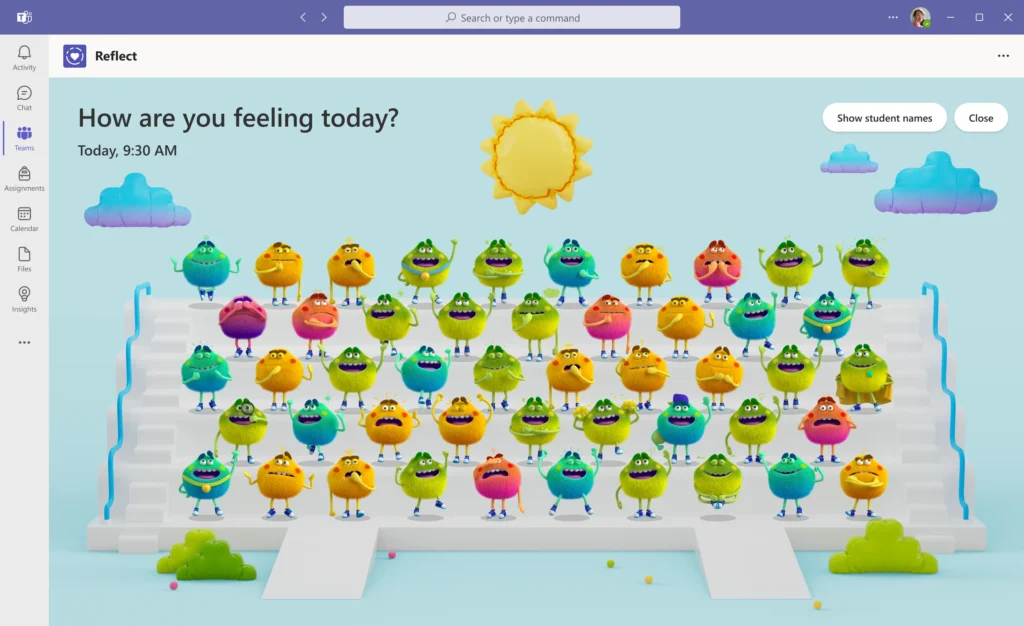Listening to and empathizing with students through ongoing dialogue is vital to their current and future success. And with the right tools educators can foster an environment where students feel heard and help keep a pulse on their emotional well-being.
That’s why we’re excited to tell you about new Microsoft Teams features that help teachers recognize students’ needs and foster more classroom communication.
Reflect helps students build their emotional skills
Reflect—a new feature in Microsoft Teams—can help learners broaden their emotional vocabulary, recognize and navigate their emotions better, and deepen empathy for their peers. It does this in part by providing regular opportunities for students to share and be heard.
Reflect also benefits educators by providing them valuable feedback and helping build a healthy classroom community that makes social emotional learning routine. Research has demonstrated that explicit teaching of social and emotional skills improves student academic and behavioral performance and has lifelong positive effects.
At Microsoft, we know that self-awareness and self-management are critical skills for lifelong learning, so Reflect provides opportunities for students to reflect on their learning. This helps educators better understand how students receive their curriculum and work with students to increase the agency they have in their own learning process. The benefit is helping students develop a growth mindset by honestly evaluating their own effort, motivation, and progress.
Reflect also provides a safe space for students to practice asking for help in areas where they feel challenged. Students can do check-ins using emojis and characters, which allows them to express themselves and develop emotional awareness. Only educators can see their students’ reflections, so students never have to worry about privacy. Together view, another part of Reflect, allows students to build empathy for others by viewing the Feelings Monsters their classmates share (the Monsters are character representations of a person’s own feelings).

Reflect also allows teachers to create custom questions for Microsoft Teams check-ins and view improved data visualizations of previous check-ins in Teams and Class Notebook. And using the OneNote Class Notebook toolbar, educators can easily insert a Reflect for learning poll that is contextualized on the Class Notebook page. These can be used as quick and easy pre- and post-assignment assessments, or as “exit slips” to help inform the next lesson.
Use Reflect to enhance your SEL routine
These are some quick ideas for how to use Reflect to either enhance your existing social and emotional learning (SEL) routine, or begin a new SEL routine:
- Reach out one-on-one to students who are experiencing a pattern of difficult emotions.
- Host conversations about the new emotional vocabulary that Reflect introduces to students. For example: Why is “excited” different than “motivated”? Or why does being able to express yourself matter?
- Discuss empathy with students by asking: Did you notice there are others in class who are also in the same feelings range today? Did you notice people who are having a different experience than you? Why might they be feeling different?
- Do some self-reflection of your own. What responses, feelings, and challenges do you have the power to impact through your teaching methods?
- Expand social emotional learning or introduce the Feelings Monster with ready-to-play games and activities on Kahoot! and Flip.
- Print a Feelings Monster poster with PowerPoint.
Learn how to create your SEL routine using Reflect today.
New home page provides one place to communicate
We’ve been listening to feedback from educators and students using Microsoft Teams, and one thing is clear: educators are looking for one place to catch up on all things. So, we’re thrilled to introduce the new home page feature rolling out this week to all class teams just in time for back to school.

Home page provides a central location to check the latest announcements, pinned class resources, upcoming assignments, recently edited class files, and more! It will be included automatically for all classes using Teams.
To get started, educators simply select Home page to launch it. Teams will pull in any assignments, virtual class meetings, or files you’ve already started adding. The rest can be customized by selecting Edit before you publish. Add fun images, additional sections, or key information about you and your class.
Only educators can make changes to the class home page, so you have control over what’s shared. And because it’s all customizable, you can set it up to your liking before admitting students to Teams at the start of the school year.
We’re excited to bring this new feature to you and your students, and we look forward to learning about how you use home pages for each of your classrooms.
Create and review assignments on iPad and Android tablets
In the past, educators have been able to create and review Reading Progress assignments on Teams using a Desktop PC, Mac and Web Browser, but not using an iPad or Android tablets. We’ve fixed that to make sure everyone has access no matter what kind of device they have. Teams now supports assignment creation and review on these two mobile platforms.
Get to know these new tools today
Want to learn more about how to get started with Reflect in Microsoft Teams, how to create Reflect check-ins or how to create an SEL routine to help students build self-awareness? Download the tools today and modify teaching methods based on the needs of students. Or check out other new Microsoft Teams features to help manage classrooms and workload.







